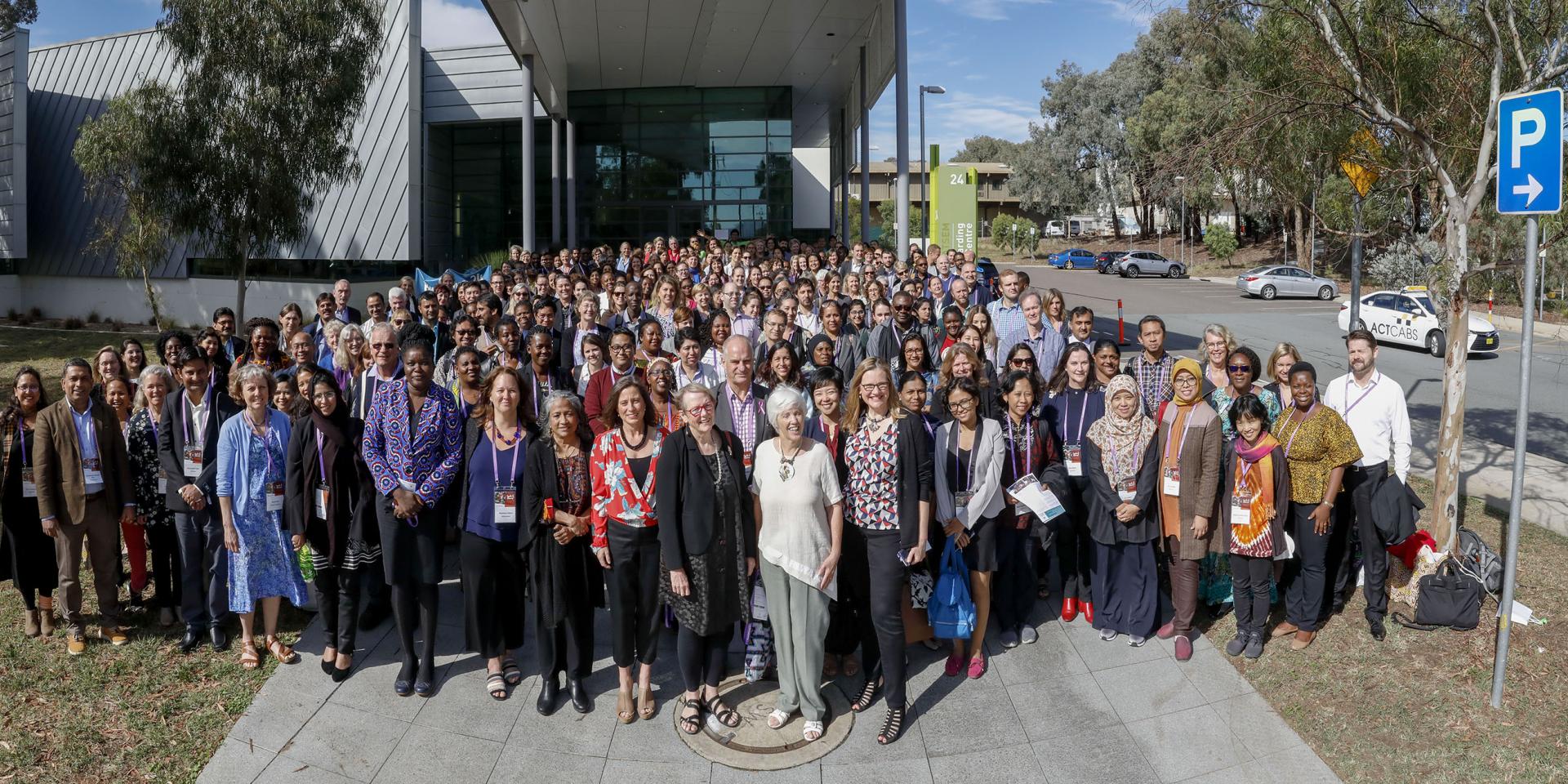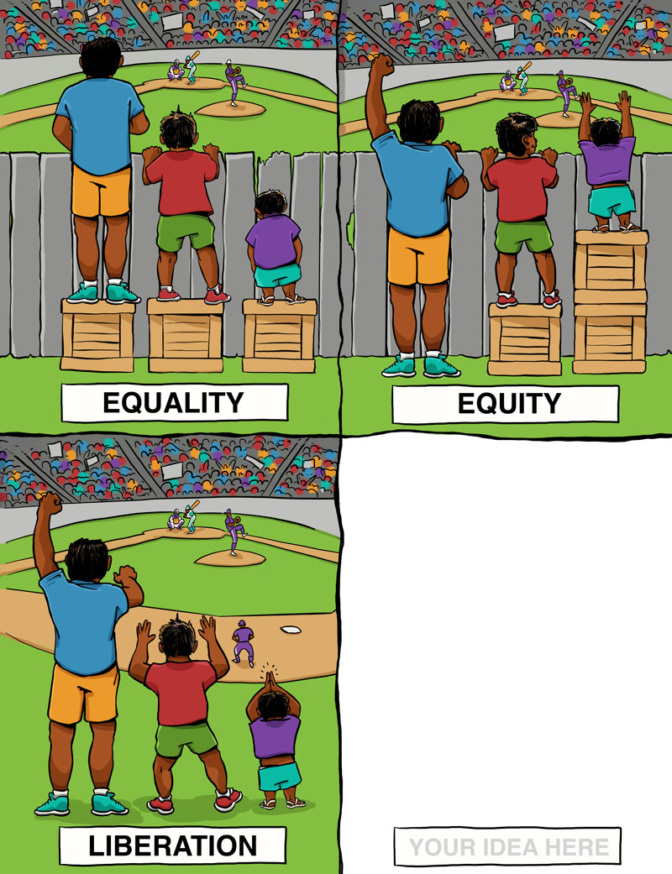Seeds of Change harvest: Our real quest is how to remove structural barriers – Barbara Pamphilon (UC – co-convener)
 Photo: Patrick Cape/ACIAR.
Photo: Patrick Cape/ACIAR.
During the Seeds of Change conference, we approached several personalities from the ‘Gender in Agriculture’ crowd to interview them on their work, on their insights about the conference and their outlook on the next frontiers of our field of research. Find an overview of all conference related outputs here.

In this special interview, we feature co-convener Barbara Pamphilon, Professor at the University of Canberra (UC) and Director of the Australian Institute for Sustainable Communities. She reflects on what the event meant to her and UC, and shares some advice for aspiring gender scientists.
What is exciting/challenging about this conference, its contents and the fact that the wider ‘GenderInAg community’ is together in this?
Many people work on the agricultural system (in certain countries, on certain crops etc.), many people work on gender and intersect occasionally with the agricultural domain, and then there’s others who come from agriculture and moved to gender. This conference was an amazing opportunity to have all these people in one place. And though some choose to remain in their own ‘space’, people could choose to go hear perspectives from different sectors, hemispheres etc. We tried to organize the conference in this way and tried to make the keynotes wide enough to be of relevance to this broad group.
What have been your highlights of the conference and what has inspired you to try back home/to your work?
I have worked in gender from when it was often the token add-on to the highlight of this conference and its focus on deep integration of gender – it was inspiring to hear so many approaches, insights and passion to significantly integrate gender in various agricultural settings. I found it so inspiring to be exposed to such a range of insights and experiences that either rang familiar, were unheard of, or even that I also didn’t quite agree with. That is the hallmark of a good conference. Gender in agriculture is hard (particularly with limited project funding, and the fact that good people are often poached as soon as others see their great contribution) so another thing that was really inspiring was to hear of the many people working in their own region or country, for their own people. It’s much easier to work at a desk on some data collection process than being out with the farmers in the communities, so it was exciting to see how much was happening in the range of countries!
What do you see as one of the ‘next frontiers’ of gender in agriculture research in the next few years?
Let me preface this with the fact that I come from the ‘second wave of feminism’—in the mid-70’s, a lot of amazing feminist work was being done with women researching and doing development to support women as marginalized groups in so many parts of our communities. A common slogan was ‘by women, for women, with women’. But it came the point where we came to see that men had to be involved, for many reasons. There was a recognition that for women’s lives to change men’s lives needed to change also. And so we needed men to be active researchers in that space too. Now looking at our conference, ‘gender’ still seems to mean ‘women’ to many people. But to enable sustainable change, as researchers we must think holistically and contextually and consider the ways genders interact – and to identify the processes that will empower the wide range of women.
It’s that eternal debate about equity vs. equality. My favorite teaching cartoon shows it clearly:

The next generation of research we need to consider is examining how to remove the fence (ie. the structural barriers for both women and men). In areas where there is poverty, gender justice is a condition for sustainable agricultural communities. But the process by which we get there is THE key.
Some of the things that are nearly surfacing are non-binary gender and other multiple perspectives that help us understand the specificities of a community or setting. In Samoa, for instance, there is a third gender that has been there culturally for centuries. We have to recognize these specificities and work differently in different places.
The other question I have is how do we influence government. It is one thing to influence donors who focus on a particular social issue. Influencing government is quite another challenge. I am struggling with how to do this in Papua New Guinea and the Pacific.
How do you look back at the conference in relation to the University of Canberra?
Staff across our University were really inspired by the fact that our conference focused on people from low income countries. There was a great deal of pride, of ‘we should be doing more of this’ and I share that sentiment. It was very valuable and gives a model, especially in terms of what you need to run such a conference e.g. working on scholarships for people from low income countries. We have had a lot of lessons and now we know a lot more about how to include people that wouldn’t normally know about international conferences, and especially how to support those who have not traveled outside their own region.
In terms of the next steps, we are wanting to make sure that this conference leaves a legacy: we are talking about special edition journals, potential books that could come out etc. My question is how can we keep networking beyond people from CGIAR and the Australian Centre for International Agricultural Research (ACIAR) groups. There’s a lot of networking going on around these organizations, which is very important, but my question is, how can we keep the wider networking going? Perhaps through a simple Facebook page? Which ‘low-tech’ ways can we use to keep the network alive?
What are you currently working on and what are you hoping to be able to focus on next?
I am currently designing a project at the next level up from the village. I am looking at how can we work with primary schools in Papua New Guinea (PNG) to help them prepare children to work in a gender equitable way across their lives. In PNG 85% of children will become farmers or work in some way in the agricultural value-chain so I will be working with teachers to explore how to integrate agricultural learning. It comes from the learning theory of mirrors and windows: children need mirrors first (that is learning about the world they already know). There has to be a first focus on place-based learning, learning all about the rural communities they live in. Then you can show children windows, such as polar bears in the snow. Very different learning for children from tropical PNG. I will also be working with PNG university colleagues to explore how we can integrate gender across the tertiary agricultural curriculums. All agriculture graduates need to have learned about gender because they are going to face gender issues all the time. If they are not prepared before graduation, they may well continue to maintain the myth that men are farmers and women are labor. If the next generation of agricultural graduates see participatory gender inclusive work as core business, we can hope for real change.
Any advice for starting gender (in agriculture) scientists?
Be open to learn from as many diverse people as you can: at the farm, community, local government, from your own local discipline. If gender in agriculture had been simple we would have cracked it by now, but we work around complex issues (some say ‘wicked problems’). Know, use and build your own strengths, from your own discipline. And then look for other knowledges and networks. Then you’ll be able to meld yours with theirs (or challenge theirs with yours). Answers are at the edges. Project-based funding pushes a lot of us to get bogged down in the core and needed activities and it’s easy to forget to look up again. And that is where our conference was so valuable— we all shared an interest in gender, but we came to it from so many different intellectual, physical and cultural perspectives – what a joy!